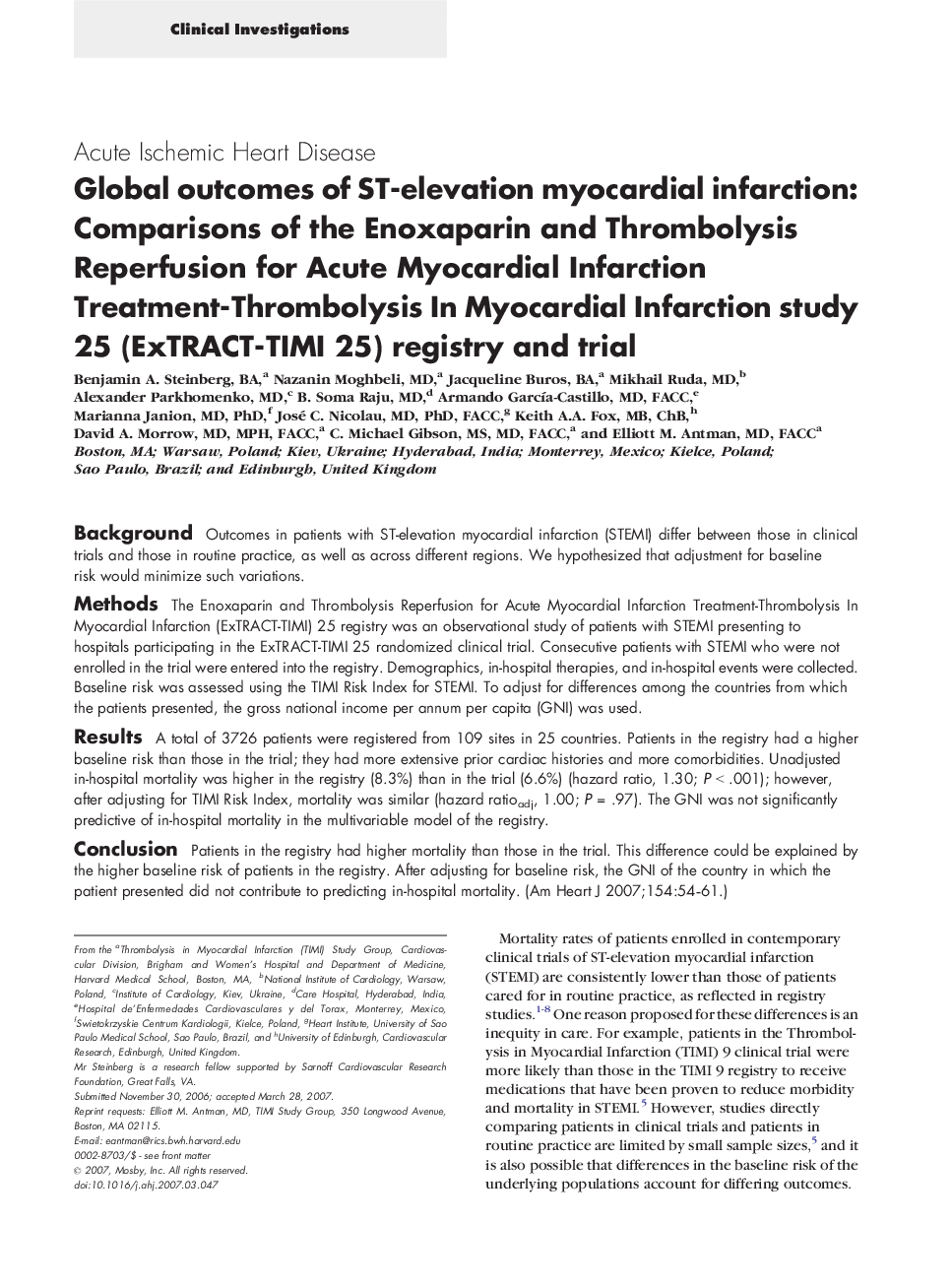| کد مقاله | کد نشریه | سال انتشار | مقاله انگلیسی | نسخه تمام متن |
|---|---|---|---|---|
| 2849139 | 1167673 | 2007 | 8 صفحه PDF | دانلود رایگان |

BackgroundOutcomes in patients with ST-elevation myocardial infarction (STEMI) differ between those in clinical trials and those in routine practice, as well as across different regions. We hypothesized that adjustment for baseline risk would minimize such variations.MethodsThe Enoxaparin and Thrombolysis Reperfusion for Acute Myocardial Infarction Treatment-Thrombolysis In Myocardial Infarction (ExTRACT-TIMI) 25 registry was an observational study of patients with STEMI presenting to hospitals participating in the ExTRACT-TIMI 25 randomized clinical trial. Consecutive patients with STEMI who were not enrolled in the trial were entered into the registry. Demographics, in-hospital therapies, and in-hospital events were collected. Baseline risk was assessed using the TIMI Risk Index for STEMI. To adjust for differences among the countries from which the patients presented, the gross national income per annum per capita (GNI) was used.ResultsA total of 3726 patients were registered from 109 sites in 25 countries. Patients in the registry had a higher baseline risk than those in the trial; they had more extensive prior cardiac histories and more comorbidities. Unadjusted in-hospital mortality was higher in the registry (8.3%) than in the trial (6.6%) (hazard ratio, 1.30; P < .001); however, after adjusting for TIMI Risk Index, mortality was similar (hazard ratioadj, 1.00; P = .97). The GNI was not significantly predictive of in-hospital mortality in the multivariable model of the registry.ConclusionPatients in the registry had higher mortality than those in the trial. This difference could be explained by the higher baseline risk of patients in the registry. After adjusting for baseline risk, the GNI of the country in which the patient presented did not contribute to predicting in-hospital mortality.
Journal: American Heart Journal - Volume 154, Issue 1, July 2007, Pages 54–61